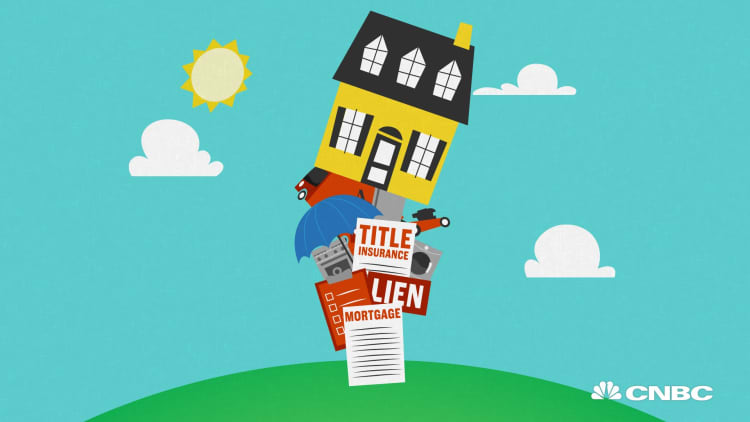Home prices have been rising for 53 straight months, lifting millions of borrowers from underwater on mortgages.
In the first three quarters of 2016 alone, howeowners added $837 billion in total equity.
But apparently those gains are not enough to counter the negative effects of rising mortgage rates.
Consumer sentiment for homebuying is falling, despite the fact that more young Americans are employed and more millennials are aging into their prime homebuying years.
Why the wet blanket on home sentiment? It's twofold: A diminishing number of consumers expect the recent spike in mortgage rates to abate, and even fewer consumers say their household income is significantly higher today than it was a year ago, according to a monthly survey by Fannie Mae.
"Despite the post-election bump in general consumer attitudes, a rapid rise in mortgage rate expectations has tamped down home-purchase sentiment, at least in the near term. A spike in economic optimism in the immediate aftermath of an election is typical. Whether consumers will sustain this level of optimism into 2017 remains unclear," said Doug Duncan, senior vice president and chief economist at Fannie Mae.
The spike in rates, ironically, is in part a reflection of consumer optimism. From stock market investors to small-business owners, the common thread is the expectation that the new administration of Donald Trump will be pro-growth, pro-business and pro-employment. That would mean stronger income growth and more job security, which in turn fuel positive housing sentiment. So far, however, that is not the case.
That may be due to the still sharp economic divide in the housing market. Home values are gaining at increasing speed, but the bulk of the gains are in the middle to high end of the housing market. As a result, negative equity (when a borrower owes more on the mortgage than the home is worth), which soared during the housing crash, is now highly concentrated at the bottom 20 percent of the market.
In fact, borrowers in lower-priced homes are nine times more likely to be underwater on their mortgages than those in the top 20 percent of the market, according to Black Knight Financial Services.
"Whereas negative home equity was once a widespread national problem — with roughly 30 percent of all homeowners being underwater on their mortgages at the end of 2010 — it has now become much more of a localized issue," said Ben Graboske, executive vice president of Black Knight Data and Analytics.
Graboske points to Nevada, Missouri and New Jersey, which have negative equity rates more than twice the national average.
As for consumers who have regained considerable home equity over the last year, some are now unable to tap it, due to higher mortgage rates — another splash of cold water on what could have been hot housing sentiment. The share of tappable equity held by borrowers whose mortgage rate is above the current average on the 30-year fixed fell from 73 percent in October to 33 percent as of Dec. 29, 2016.
Mortgage rates have eased slightly in the last week, but they could just as easily turn right back around once president-elect Trump is inaugurated, and his economic policies become more clear. The impending spring housing market, given all the moving parts in the economy, rising home prices, falling consumer sentiment and the pitifully meager supply of homes for sale, is still very much a work in progress.
WATCH: The hidden costs of buying a home



